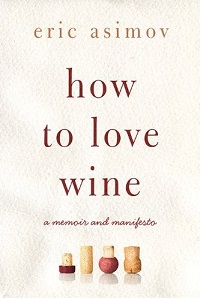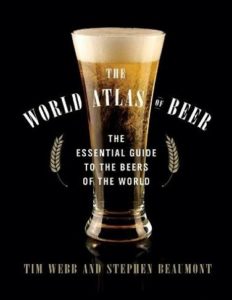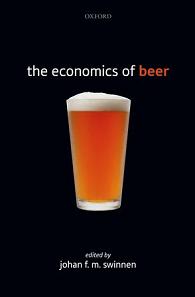 This is another book from Brewers Publications that bridges the worlds of brewers and drinkers. As with Stan’s excellent For The Love of Hops, the book provides context, history, categorizations, practical application of the topic in brewing and plenty of evidence of sheer enthusiasm. That being said, a few initial quibbles:
This is another book from Brewers Publications that bridges the worlds of brewers and drinkers. As with Stan’s excellent For The Love of Hops, the book provides context, history, categorizations, practical application of the topic in brewing and plenty of evidence of sheer enthusiasm. That being said, a few initial quibbles:
⇒ The advent of pale malt did not occur in the late 1600s as suggested at page 15. Coke is used to dry malt first in 1642 and straw dried malt goes back well before that, probably as a folk skill unrelated to commercial enterprise or estate management. Makes sense. After all, grain-drying was known in the medieval centuries as a means to preserve a damp crop and preference for better beer was known to the hipsters of the 14th century.
⇒ Beer on English ships goes further back than described at page 19. It was present on board Elizabeth’s navy during the second half of the 1500s. Here is the wooden tankard from Henry VIII’s Mary Rose from the 1540s. Unlikely beer on ships was key to the instigation of 1700s beer exports from Britian.
⇒ The trade in beer by ship described around the same point predates the suggested time frame by centuries and was not created by England. Unger shows how Wismar of the Hanseatic League – in what is now Germany located on the Baltic coast east of Denmark – barred the import of beer by sea in 1356.¹ What creates the opportunity for the Burton beer trade to Russia as much as anything in the latter end of the 1600s for England is the usurpation of Dutch dominance of Baltic shipping.²
Let’s be clear. There are nothing wrong with the facts were they just characterized as a little less conclusive but rather more part of a pattern in a larger flow. And the choices made are done so in support of the narrative. And to create that narrative levels of abstractions are used by necessity to achieve a consistent voice. So, these are quibbles only but they are ones that get noticed if you are looking for this sort of thing. And the audience is not meant to be looking for this sort of thing, is it.
Worth noting is how the book’s introduction is an amazing “who’s who” of folk thinking about beer these days, most of them thinking intelligently. I found the statement that Martyn and Ron had fact checked the material in the book odd as it, at first, gave me that sinking feeling that we were facing authority by reputation. As we know, like the Gospels, Michael Jackson can be cited for any proposition that might be wanted to be made in relation to good beer these days. I would hate for such a fate to be extended to others. But – and note I did say “at first” two sentences back – we are blessed with a bibliography that includes each of their writings as well as, blessings fall upon the head of Mitch Steele, actual footnotes. These give you the ability to see whose work was relied upon for each sentence in certain sections allowing you to judge accordingly as well as provide the reader with the tools to undertake some follow up reading.
Much of what is written above focuses on a limited portion of the history of IPA as described by Steele and should give you a sense of the engagement with his topic he offers the reader. Unlike this review, the book spends most of its time discussing variants of IPA across time and continents up to and including gag-reflex tickling evolutionary dead end of White IPA: “…effectively a blend of the Belgian Wit and the American IPA.” I would have liked to see a discussion of IPA as brand in which anything hoppy can have the “IP” slapped on as a prefix and, voila, a style is born. I would have also liked to see a bit more of a discussion on how IPA as we know it now is a bit of revisionist concept a bit decontextualized from its relatives pale ale and the variants.³ But this is an enthusiast’s text, not a critical study. Nor should it be.
Bottom line? Another excellent volume that should satisfy the intermediate and experience beer nerd. It should also be mandatory bedside reading for any brewer or aspiring brewer.
¹See: Beer in the Middle Ages and the Renaissance, (Fenn, 2006) at page 73.
²See Peltries or Plantations, (John Hopjins Press, 1969) at pages 63 to 71; see also Holland on the Hudson, (Cornell, 1986) at page 209.
³For a similarly structured book that accomplishes this better if in less detail, see Pale Ale by Terry Foster from 1990, from the same publisher’s, Brewers Publications, earlier generation of style guides.
 That is Alcohol and its Role in the Evolution of Human Society by Ian S. Hornsey. I had no idea. In a work of beer writing that is still trying to find its way, seeking to evolve from fanboy gushing or trade focused boosterism or underdeveloped efforts at business journalism, Hornsey’s 2004 book A History of Beer and Brewing stands where few others do as a successful description of the broad scope beer and western society. So, it was a gigglefest when I put his name in the the hands of Lord Good to find out that there was this 2012 publication of the Royal Society of Chemistry exactly one credit card charge and international cross-Atlantic postal service away from me. Joy.
That is Alcohol and its Role in the Evolution of Human Society by Ian S. Hornsey. I had no idea. In a work of beer writing that is still trying to find its way, seeking to evolve from fanboy gushing or trade focused boosterism or underdeveloped efforts at business journalism, Hornsey’s 2004 book A History of Beer and Brewing stands where few others do as a successful description of the broad scope beer and western society. So, it was a gigglefest when I put his name in the the hands of Lord Good to find out that there was this 2012 publication of the Royal Society of Chemistry exactly one credit card charge and international cross-Atlantic postal service away from me. Joy.
 This is another book from Brewers Publications that bridges the worlds of brewers and drinkers. As with Stan’s excellent
This is another book from Brewers Publications that bridges the worlds of brewers and drinkers. As with Stan’s excellent 

 As recently discussed, the past is a foreign land when it comes to
As recently discussed, the past is a foreign land when it comes to 


